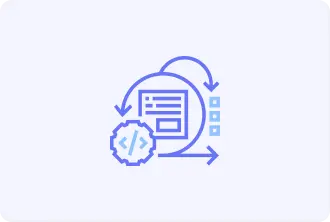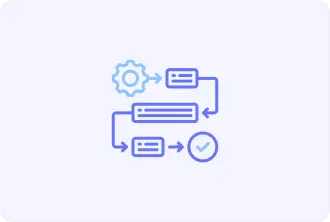Iterative Development Definition

Iterative development is a software development approach in which the project is developed and improved through subdivision into a number of small pieces that can be handled easily. In sharp contrast, iterative development involves dividing the entire development process into cycles or “iterations.”
Each successive iteration refines the working version of software to enable continuous adjustments, according to user feedback and testing. It enables a team to easily be flexible and accept changes even while the project is going on to improve the product.
Iterative and Incremental Development
Iterative and incremental development are terms usually used together, even though they actually describe two different concepts. Iterative development represents cycles of development which can also repeat by refinement each time, while in incremental development, the software is built in small complete pieces which, on their own, would be able to work. Together, these approaches guarantee that, in time, the quality and functionalities of a product will evolve.
For instance, the development team may create a basic version of the software with core features in the first iteration, add new features in subsequent iterations, or enhance previous ones based on feedback and test results. Such a strategy has less risk and always keeps a version of the product for the stakeholder to review.
The Agile development model follows one of the most common frameworks, with iterative and incremental approaches. Without dwelling on developing software over a long period, two to four weeks usually characterize agile. This allows the development team to be very responsive to changes besides being effective in putting those changes through. In agile, each iteration builds from its predecessor, either in the refinement of the user interface or bug fixes, up until an iteration has evolved that meets the needs of the user.
Controlling Iterative Software Development
Iterative software development control is vital to the success of this approach. It has significant importance in the process to outline a good structure and ensure objectives are clear throughout the refinement cycles. When uncontrolled, the project goes into chaos due to the overwhelming number of iterations or scope creep with regards to the development team.
One of the ways to manage is by setting clear goals for every iteration. These should be achievable within the time that an iteration covers, showcasing specific features or enhancements to focus on. Agile sprinting is helpful in providing this structure by setting out clear tasks that a team can complete within a certain specified time.
Another important ingredient in successful communication between stakeholders and development teams is that with every iteration, there is a new rendering of the software, thus feedback is continuous in nature. This allows teams to change or adapt priorities to make sure they are on track to complete business objectives. Tools like JIRA and Trello provide great ways to manage tasks and track progress against iterations, and their transparency keeps everyone informed.
Also, iterative development facilitates risk management. Since each iteration is a partial completion, it allows the early detection of risk. Thus, it promotes early solutions to lower the risks of big issues piling up at the end. By this, the team adapts to changes and handles unexpected challenges with better results.
Quality in Iterative Development
Indeed, iterative development is an advantage and a challenge in quality assurance. Frequent testing and feedback that make up each iteration thus are easily identified; hence, it is rather painless to keep the standards high through the project. Testing usually occurs last in most traditional development models, but since iterative development incorporates testing into every step of the way.

In every iteration, the state of the software concerning functionality and quality is reviewed. This approach ensures that sharpener features are continuously improved, debugging is enhanced, and user experience is improved throughout the project. Sometimes, automated testing using tools like Selenium or JUnit is used to run efficient tests with every iteration in such cases to ensure new problems are not introduced.
On the other hand, iterative development implies frequent changes, which in turn might make it difficult to maintain consistency. While adding new features and revising old ones, developers need to ensure that the quality of the software remains constant through iterations. Regression testing becomes very important; this ensures that the changes made in the current iteration have not affected features developed earlier.
Quality in iterative development also very strongly relates to feedback. Basically, frequent communication with stakeholders and end-users helps teams understand whether the product fits the expectations or not. The more frequently the team picks up feedback, it can stay in tune with what it is trying to achieve from the project, make course corrections if necessary, and avoid big issues in the final product.
Conclusion
Iterative development is the flexible and adaptive approach to developing software that continuously involves users’ feedback and improvements during the course of development. This splits the project into development cycles where teams create versions of the software that work at any moment, reducing risks by means of progress and quality within the product.
Techniques like agile software development, in which iterative and incremental processes are integrated, allow teams to deliver quicker and make changes with considerably more ease. However, iterative development does need control so that the project stays on the right track guided by business-oriented objectives. Constant testing and a review-and-refine process throughout its course for quality assurance become necessary.
Iterative development is, therefore, a very good methodology to follow when developing software, since it is continually in evolution, although always with the user’s best product in focus.